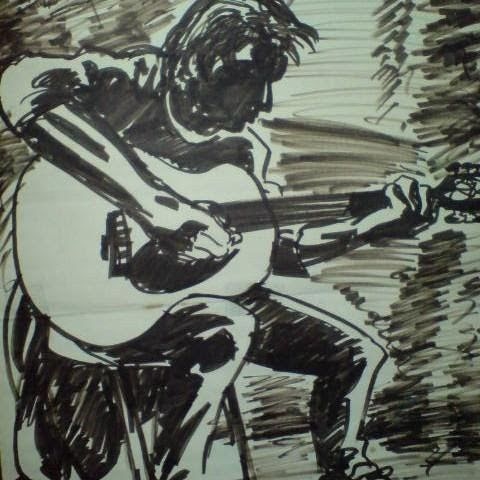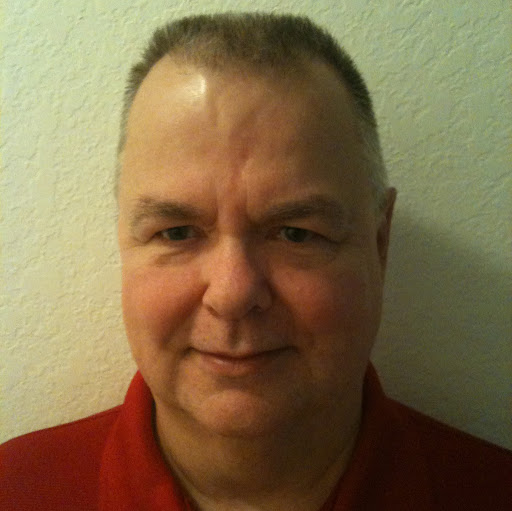John P Donoghue
Deceased
from Lemont, IL
John Donoghue Phones & Addresses
- Lemont, IL
- Lynn, MA
- Mooresville, NC
- Elkhorn, WI
- Kenmore, NY
- Huntersville, NC
- Palos Hills, IL
- Hickory Hills, IL
Wikipedia References

John Donoghue (Neuroscientist)

John Donoghue (Writer)

John P. Donoghue
Lawyers & Attorneys

John J Donoghue, New York NY - Lawyer
view sourceAddress:
850 3Rd Avenue, New York, NY 02110
212 750-2185 (Office)
212 750-2185 (Office)
Licenses:
Dist. of Columbia - Active 2001
Education:
Georgetown University
Degree - BA - American Studies and Humanities
Graduated - 1994
Degree - BA - American Studies and Humanities
Graduated - 1994

John T. Donoghue, Dover MA - Lawyer
view sourceAddress:
Box 516, Ten Springdale Ave, Dover, MA 02030
508 785-1303 (Office)
508 785-1303 (Office)
Licenses:
Massachusetts - Active 1973
Isbn (Books And Publications)
-
Quantitative Chemistry: An Experimental Approach
view source -
Author:John T. Donoghue
-
ISBN #:0800500237
-
Dynamics Of The Standard Model
view source -
Author:John F. Donoghue
-
ISBN #:0521362881
-
Dynamics Of The Standard Model
view source -
Author:John F. Donoghue
-
ISBN #:0521476526
-
Alexander Jackson Davis, Romantic Architect 1803-1892
view source -
Author:John Donoghue
-
ISBN #:0405140789
-
Shiitake Growers Handbook: The Art And Science Of Mushroom Cultivation
view source -
Author:John Donoghue
-
ISBN #:0840349629
-
Pariah Persistence In Changing Japan: A Case Study
view source -
Author:John D. Donoghue
-
ISBN #:0819101702
Resumes

John P Ocd Donoghue
view source
John Donoghue
view source
John Donoghue
view source
John O Donoghue
view source
John Donoghue
view sourceLocation:
United States

John Donoghue
view sourceLocation:
United States

John Donoghue
view sourceLocation:
United States

John Donoghue
view sourceLocation:
United States
Us Patents
-
Patient Training Routine For Biological Interface System
view source -
US Patent:7991461, Aug 2, 2011
-
Filed:Dec 23, 2005
-
Appl. No.:11/315225
-
Inventors:J. Christopher Flaherty - Topsfield MA, US
Mijail D. Serruya - Providence RI, US
Daniel S. Morris - Stanford CA, US
Abraham H. Caplan - Cambridge MA, US
Maryam Saleh - Chicago IL, US
John P. Donoghue - Providence RI, US -
Assignee:BrainGate Co., LLC - Ponte Vedra Beach FL
-
International Classification:A61B 5/04
-
US Classification:600545, 600544
-
Abstract:Various embodiments of a biological interface system and related methods are disclosed. The system may comprise a sensor comprising a plurality of electrodes for detecting multicellular signals emanating from one or more living cells of a patient and a processing unit configured to receive the multicellular signals from the sensor and process the multicellular signals to produce a processed signal. The processing unit may be configured to transmit the processed signal to a controlled device that is configured to receive the processed signal. The system is configured to perform an integrated patient training routine to generate one or more system configuration parameters that are used by the processing unit to produce the processed signal.
-
Method And System For Combining Multiple Low Power Laser Sources To Achieve High Efficiency, High Power Outputs Using Transmission Holographic Methodologies
view source -
US Patent:20020181035, Dec 5, 2002
-
Filed:Sep 14, 2001
-
Appl. No.:09/952681
-
Inventors:John Donoghue - South Boston MA, US
-
International Classification:G03H001/10
H04J014/02 -
US Classification:359/010000, 359/124000
-
Abstract:The Holographic Beam Combiner, (HBC), is used to combine the output from many lasers into a single-aperture, diffraction-limited beam. The HBC is based on the storage of multiple holographic gratings in the same spatial location. By using a photopolymer material such as quinone-doped polymethyl methacrylate (PMMA) that uses a novel principle of “polymer with diffusion amplification” (PDA), it is possible to combine a large number (N) of diode lasers, with an output intensity and brightness 0.9 N times as much as those of the combined outputs of individual N lasers. The HBC will be a small, inexpensive to manufacture, and lightweight optical element. The basic idea of the HBC is to construct multiple holograms onto a recording material, with each hologram using a reference beam incident at a different angle, but keeping the object beam at a fixed position. When illuminated by a single read beam at an angle matching one of the reference beams, a diffracted beam is produced in the fixed direction of the object beam. When multiple read beams, matching the multiple reference beams are used simultaneously, all the beams can be made to diffract in the same direction, under certain conditions that depend on the degree of mutual coherence between the input beams.
-
Biological Interface Systems With Controlled Device Selector And Related Methods
view source -
US Patent:20060049957, Mar 9, 2006
-
Filed:Aug 11, 2005
-
Appl. No.:11/201287
-
Inventors:Timothy Surgenor - Dover MA, US
John Donoghue - Providence RI, US
Mijail Serruya - Providence RI, US
J. Flaherty - Topsfield MA, US -
International Classification:G09B 21/00
-
US Classification:340825190
-
Abstract:Various embodiments of a biological interface system and their related methods are disclosed. A biological interface system may include a sensor including a plurality of electrodes configured to detect multicellular signals emanating from one or more living cells of a patient and a processing unit configured to receive the multicellular signals from the sensor and to process the multicellular signals to produce processed signals. The system may also include a plurality of controlled devices each configured to receive the processed signals. The plurality of controlled devices include at least a first controlled device and a second controlled device. The system may include a selector module usable by an operator and being configured to select which of the first and second controlled devices is to be controlled by the processed signals.
-
Biological Interface Systems With Wireless Connection And Related Methods
view source -
US Patent:20060058627, Mar 16, 2006
-
Filed:Aug 11, 2005
-
Appl. No.:11/201283
-
Inventors:J. Flaherty - Topsfield MA, US
John Donoghue - Providence RI, US -
International Classification:A61B 5/05
-
US Classification:600409000
-
Abstract:Various embodiments of a biological interface system and their related methods are disclosed. A biological interface system may include a sensor including a plurality of electrodes configured to detect multicellular signals emanating from one or more living cells of a patient and a processing unit configured to receive the multicellular signals from the sensor, to process the multicellular signals to produce processed signals, and to transmit the processed signals. The system may also include a controlled device configured to receive the processed signals from the processing unit. The processing unit may include a processing unit first portion and a processing unit second portion, where the processing unit first portion is implanted under the scalp on the skull of the patient, and the processing unit second portion is placed above the scalp of the patient at a location proximal to the processing unit first portion.
-
Method And System For Combining Multiple Laser Beams Using Transmission Holographic Methodologies
view source -
US Patent:20060109876, May 25, 2006
-
Filed:Nov 22, 2004
-
Appl. No.:10/904669
-
Inventors:John Donoghue - South Boston MA, US
Mark Andrews - Brookline MA, US -
International Classification:H01S 3/13
H01S 3/08 -
US Classification:372032000, 372102000
-
Abstract:The Holographic Beam Combiner, (HBC), is used to combine the output from many lasers into a single-aperture, diffraction-limited beam. The HBC is based on the storage of multiple holographic gratings in the same spatial location. By using a photopolymer material such as quinone-doped polymethyl methacrylate (PMMA) that uses a novel principle of “polymer with diffusion amplification” (PDA), it is possible to combine a large number (N) of diode lasers, with an output intensity and brightness 0.9 N times as much as those of the combined outputs of individual N lasers. The HBC will be a small, inexpensive to manufacture, and lightweight optical element. The basic idea of the HBC is to construct multiple holograms onto a recording material, with each hologram using a reference beam incident at a different angle, but keeping the object beam at a fixed position. When illuminated by a single read beam at an angle matching one of the reference beams, a diffracted beam is produced in the fixed direction of the object beam. When multiple read beams, matching the multiple reference beams are used simultaneously, all the beams can be made to diffract in the same direction, under certain conditions that depend on the degree of mutual coherence between the input beams.
-
Biological Interface System
view source -
US Patent:20060173259, Aug 3, 2006
-
Filed:Oct 3, 2005
-
Appl. No.:11/240652
-
Inventors:J. Flaherty - Topsfield MA, US
Burke Barrett - Franklin MA, US
John Donoghue - Providence RI, US
Richard Van Wagenen - Salt Lake City UT, US
Christopher Smith - Salt Lake City UT, US
Andras Pungor - Salt Lake City UT, US
Christine Decaria - Salt Lake City UT, US
Almut Branner - Salt Lake City UT, US
Nephi Harvey - Kayesville UT, US
Anthony Misener - Boutiful UT, US
K. Guillory - Salt Lake City UT, US
Jon Joseph - Madison WI, US -
International Classification:A61B 5/00
-
US Classification:600331000
-
Abstract:A system and method for an improved biological interface system that processes multicellular signals of a patient and controls one or more devices is disclosed. The system includes a sensor that detects the multicellular signals and a processing unit for producing the control signal based on the multicellular signals. The system may include improved communication, self-diagnostics, and surgical insertion tools.
-
Joint Movement Apparatus
view source -
US Patent:20060189899, Aug 24, 2006
-
Filed:Dec 29, 2005
-
Appl. No.:11/319620
-
Inventors:J. Christopher Flaherty - Topsfield MA, US
R. Flaherty - Topsfield MA, US
Gerhard Friehs - East Greenwich RI, US
Mijail Serruya - Providence RI, US
Burke Barrett - Franklin MA, US
John Donoghue - Providence RI, US -
International Classification:A61B 5/103
-
US Classification:600595000
-
Abstract:Systems, methods and devices for restoring or enhancing one or more motor functions of a patient are disclosed. The system comprises a biological interface apparatus and a joint movement device such as an exoskeleton device or FES device. The biological interface apparatus includes a sensor that detects the multicellular signals and a processing unit for producing a control signal based on the multicellular signals. Data from the joint movement device is transmitted to the processing unit for determining a value of a configuration parameter of the system. Also disclosed is a joint movement device including a flexible structure for applying force to one or more patient joints, and controlled cables that produce the forces required.
-
Multi-Device Patient Ambulation System
view source -
US Patent:20060206167, Sep 14, 2006
-
Filed:Dec 29, 2005
-
Appl. No.:11/319267
-
Inventors:J. Flaherty - Topsfield MA, US
Mijail Serruya - Providence RI, US
John Donoghue - Providence RI, US -
International Classification:A61N 1/18
-
US Classification:607048000
-
Abstract:Various embodiments of an ambulation and movement assist system are disclosed. For example, an ambulation system for a patient may comprise an exoskeleton device attached to the patient, an FES device at least partially implanted in the patient, and a biological interface apparatus. The biological interface apparatus comprises a sensor having a plurality of electrodes for detecting multicellular signals, a processing unit configured to receive the multicellular signals from the sensor, process the multicellular signals to produce a processed signal, and transmit the processed signal to a controlled device. At least one of the exoskeleton device and the FES device is the controlled device of the biological interface apparatus.
Name / Title
Company / Classification
Phones & Addresses
CEO
Cibt
Passport & Visa Services
Passport & Visa Services
180 N Stetson Ave STE 3170, Chicago, IL 60601
312 240-1200
312 240-1200
President
Cool Products Inc
Builds Installs Coolers
Builds Installs Coolers
145 Un St, Holbrook, MA 02343
781 767-9090
781 767-9090
CEO
Cibt
Misc Personal Services · Photographers
Misc Personal Services · Photographers
180 N Stetson Ave STE 3170, Chicago, IL 60601
312 240-1200
312 240-1200
President
MANCHESTER TROOP 3 INC
1 Greenbrier Rd, Manchester, MA 01944
30 Randolph Dr, Tewksbury, MA 01876
30 Randolph Dr, Tewksbury, MA 01876
Director
MANCHESTER CLUB, INC.,THE
30 Pne St, Manchester, MA 01944
2 Jersey Ln, Manchester, MA 01944
2 Jersey Ln, Manchester, MA 01944
Director
TEWKSBURY CARES, INC
Ret Tobacco Products
Ret Tobacco Products
Tewksbury Cares, Tewksbury, MA 01876
286 Livingston St, Tewksbury, MA 01876
417 N St, Tewksbury, MA 01876
286 Livingston St, Tewksbury, MA 01876
417 N St, Tewksbury, MA 01876
Manager
Seed Planters Supply & Equipment LLC
Ret Nursery/Garden Supplies Whol Farm/Garden Machinery
Ret Nursery/Garden Supplies Whol Farm/Garden Machinery
14310 Hunters Rd, Huntersville, NC 28078
704 992-0330
704 992-0330
Principal
John W O'Donoghue Jr
Business Services at Non-Commercial Site
Business Services at Non-Commercial Site
410 Border Rd, West Concord, MA 01742
Myspace

John Donoghue
view sourceNews

National Cathedral Is Removing Stained Glass Windows Honoring Confederate Leaders
view source- The statement was issued jointly by Rev. Mariann Edgar Budde, bishop of the Episcopal Diocese of Washington; Rev. Randolph Marshall Hollerith, dean of the Washington National Cathedral; and John Donoghue, who chairs the Cathedral Chapter group.
- Date: Sep 06, 2017
- Category: U.S.
- Source: Google

How scientists are helping people with 'locked-in syndrome' communicate for first time
view source- The Wyss Centers director, professor John Donoghue, said the institution is committed to making this happen and plans to develop clinically useful technology that will be available to people with paralysis resulting from ALS, stroke, or spinal cord injury.
- Date: Feb 02, 2017
- Category: Sci/Tech
- Source: Google

Stimulation restores some function for 4 paralyzed men
view source- The mere fact that the treatment works at all will promote other research in the field, said John Donoghue, a neuroscientist and director of the Brown University Institute for Brain Science, who was not involved in the work.
- Date: Apr 08, 2014
- Category: Health
- Source: Google

Brain Project Draws Presidential Interest
view source- primarily on animal models. In the last few months of conversations between Chun and colleagues and federal agencies, however, the group has increased its emphasis on human applications, inviting researchers like John Donoghue, who works on brain-controlled prosthetics, to join the conversation.
- Date: Feb 20, 2013
- Category: Sci/Tech
- Source: Google

Government Embarks on Brain Map
view source- The idea is to organize a national effort to crack the problem of how the brain functions at its deepest levels, and how various neurological ailments might be better treated, said John Donoghue, a neuroscientist at Brown University who is involved in the project.
- Date: Feb 18, 2013
- Category: Sci/Tech
- Source: Google

Paralyzed patients move robots with minds
view source- ve or 10 years before would not be eligible ... but these patients show the competency still remains, said Story Landis, director of the National Institute of Neurological Disorders and Stroke, which began funding the foundational research by Brown University neuroscientist John Donoghue in 1986.
- Date: May 19, 2012
- Category: Sci/Tech
- Source: Google

Implant Allows Paralyzed Subjects to Move Robots with a Thought
view source- 2 clinical trial at the Brown Institute for Brain Science in Providence, R.I. It was led by institute director John Donoghue, who told Nature.com that his team's latest work is a major advance on an earlier accomplishment that involved using the neural implants to move a cursor on a computer screen.
- Date: May 18, 2012
- Category: Sci/Tech
- Source: Google

Scientists 'euphoric' over promise of mind-controlled robotic arm
view source- complicates the necessary commands exponentially. To move from this type of two-dimensional movement to movements involving reaching out for an object, grasping it and then guiding it in three-dimensional space is a huge step for us, said John Donoghue, director of the Brown Institute for Brain Science.
- Date: May 17, 2012
- Source: Google

John O Donoghue
view source
John Randy Donoghue
view source
John O Donoghue
view source
John O Donoghue
view source
John Joseph Donoghue
view source
John O Donoghue
view source
John O Donoghue
view source
John Patrick Donoghue
view sourceYoutube
Flickr
Classmates

John Donoghue
view sourceSchools:
Queen of All Saints School Chicago IL 1957-1961
Community:
Michael Link, Debra Muth, Mike Ahern, Peter Morano

John Laurie Donoghue
view sourceSchools:
Loyola Academy Chicago IL 1933-1937
Community:
Paul Hanna, Paul Werner, Henry Melton

John Donoghue
view sourceSchools:
Centennial High School Vancouver Saudi Arabia 1968-1972
Community:
Lance Mckinney, Shirley Fehr

John Donoghue
view sourceSchools:
Manchester High School Manchester MA 1966-1970
Community:
Sally Gerry, Arden Donovan, Kim Rose

John Donoghue
view sourceSchools:
American High School Chicago IL 1937-1941
Community:
Helen Briglio, Raymond Bruno, Bashir Oladipo, Charles Green, Tonya Baker, Roy Haga

John Donoghue
view sourceSchools:
Morrisonville Elementary School Morrisonville NY 1960-1966
Community:
Adam Frost, Jessica Wood, Cheryl Oconnell
Plaxo

John Donoghue
view source
John Donoghue
view sourceSupervisor at Verizon Wireless

John Donoghue
view sourceExecutive Head Chef at LiveNation
Googleplus

John Donoghue
Tagline:
No scroats...

John Donoghue
About:
Commercial and domestic plasterers in the heart of West Yorkshire
Bragging Rights:
Excellent plasterers with many years experience.

John Donoghue

John Donoghue

John Donoghue

John Donoghue

John Donoghue

John Donoghue
Get Report for John P Donoghue from Lemont, ILDeceased













